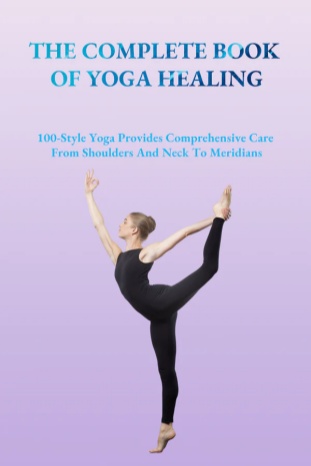Carrying Water and Chopping Wood Are All Zen Meditation
Zen is an inner world that is difficult to express—a subjective experience that only those who have truly practiced can understand. For those without such experience, trying to comprehend Zen through language, writing, or rational thought is like a blind person trying to describe an elephant, or a duck hearing thunder. As the saying goes, “Only the drinker knows the temperature of the water.” When we attempt to introduce the essence of Zen, we can only use metaphorical means—describing the clouds in order to reveal the moon behind them. We cannot directly point to what the moon is.
Today, I will present the essence and phenomena of Zen through eight thematic segments, centered around the topic chosen by Mr. Zhang Hongyang, the convener of this lecture at Guizhuangyan Temple: “Carrying Water and Chopping Wood Are All Zen.” This will form the foundation for our two-hour exploration.
we recommend his book:
Zen Meditation Wisdom: The Q&A of Nearly Three Hundred Meditation Questions, Encompassing All Aspects of Meditation

Zen as Universal Presence
Since Zen is an inexpressible inner experience, it is not a tangible object or concrete phenomenon. Yet paradoxically, it might be found in all things that can be touched, noticed, or sensed.
If one has not realized Zen, words are meaningless. But if one has awakened to it, Zen is everywhere—in every moment, in every detail.
This universal presence means that each thing in the cosmos exists independently and uniquely. You are not me. A person is not a cow. Water is not fire. East is not west. Each individual phenomenon has its own boundaries, nature, and characteristics—what Buddhism calls the “ten thousand dharmas.”
To someone who has experienced enlightenment, all these myriad phenomena are seen with clarity and order. The mind reflects reality truthfully, like a mirror that reveals everything without distortion.
Zen Master Guifeng Zongmi (780–841) said:
“The mirror is clear and reflects all forms; the mind is pure and responds to all beings. The images resemble the adorned lands of the Buddhas, and the responses are the compassionate teachings that liberate sentient beings.”
This means that the enlightened mind is still and bright—like a calm lake or a spotless mirror. It responds to every situation without attachment or obstruction. To such a mind, all appearances—beautiful or ugly, good or bad—are manifestations of the Buddha realm. Compassion flows freely without hindrance. This is the wondrous function of spiritual power.
Similarly, when Li Ao, a great Confucian scholar, asked Chan Master Yaoshan Weiyan (745–828), “What is the Way (Dao)?” the master replied:
“The clouds are in the sky; the water is in the bottle.”
This simple answer reveals the essence of the Way. Just as clouds belong in the sky and water fits in a bottle, each thing has its place, its form, and its nature. The Way is not some abstract mystery—it is clarity, appropriateness, and harmony.
Hongzhi Zhengjue (1091–1157) expressed it this way:
“Everything appears clearly, nothing is obscured; in every place, the truth is complete.”
The awakened mind sees each thing as it is—not confused by complexity or multiplicity. This presence of clarity and completeness in every moment is the heart of Zen.
Zen as the Unity of Inner and Outer
The so-called unity of inner and outer refers to the harmony of the whole being. This unity can be realized through three progressive steps:
- Through physical practices such as sitting meditation, massage, Daoist qigong exercises, or yogic postures from Indian traditions, the flow of energy and breath in the body becomes unblocked, resulting in a state of relaxation and the sensation of body and mind becoming one.
- Through meditative or contemplative practices—be it meditation, prayer, or other forms of inner stillness—we may begin to experience the unity between the external environment and the internal spirit. This is known as the experience of “heaven and humanity as one.”
- Through deep concentration in Zen meditation, where the mind focuses entirely on the method of practice, the continuity of thoughts stabilizes. As wandering thoughts disappear, a state of samādhi (deep meditative absorption) emerges. This is a unification of inner awareness—where all mental fluctuations dissolve, and the mind becomes one-pointed and still.
When a Zen master engages with the world in everyday life, the level of expression he embodies is one of this inner-outer unity. This is also why many religious and philosophical traditions, whether Eastern or Western, though differing in interpretation, often converge in the experiential essence of the “Way” (Tao). However, from the Zen perspective, such unity also varies in depth. Ultimately, there is a level that even transcends the concept of “unification,” a realm beyond language and debate.
Here are three examples:
(1) Someone once asked Zen Master Shitou Xiqian (700–790):
“What is the meaning of the Patriarch’s coming from the West?”
Shitou replied, “Ask the wooden pillar outside.”
This question refers to the meaning of Bodhidharma’s journey from India to China to transmit Zen. What exactly did he bring? What is the essence of Zen? Can it be explained or shown?
According to common understanding, Zen is a transmission of mind beyond words and symbols. Yet Shitou directs the questioner to ask an inanimate wooden post or stone pillar—things that obviously cannot respond. But to an enlightened Zen master, the inner realization is not separate from the outer world. The lifeless post and stone, the awakened mind, the Buddha-nature, the ancient patriarch Bodhidharma, and even the present Zen master—all are inseparable and one in essence. Therefore, asking the master or the post makes no difference.
(2) A monk asked Niu-tou Huizhong (682–769):
“What is the Buddha-mind?”
The master replied, “The wall, bricks, and rubble.”
The monk asked again:
“If these inanimate things possess Buddha-nature, can they preach the Dharma?”
The master replied:
“They preach with blazing fervor, without pause or interruption.”
Here, the monk assumed that only sentient beings could possess Buddha-nature—the pure, undefiled mind of wisdom and compassion. But from the awakened view of Zen, the Buddha-mind is not grasped through theories, but through the unity of inner awareness and outer reality. Therefore, even a wall, broken bricks, or fragments of tile are expressions of the Buddha-mind.
Still puzzled, the monk asked whether these lifeless objects could actually teach the Dharma. The answer: not only do they teach, they do so constantly, passionately, and without interruption. This perspective is freer and more expansive than conventional Buddhist views. From the enlightened standpoint, not only sentient beings, but also trees, stones, and all phenomena, are united with Buddha-nature. Wherever the Buddha-mind is present, everything outside is Buddha.
Note: This article is excerpted from the teachings of Master Sheng Yen.
we recommend his book:
Zen Meditation Wisdom: The Q&A of Nearly Three Hundred Meditation Questions, Encompassing All Aspects of Meditation
(3) A monk asked Dongshan Liangjie (807–869):
“What is Buddha?”
The master answered, “Three pounds of flax.”
The monk asked again, “What is Buddha?”
The master replied, “A dry shit stick.”
These two classic Zen stories have been interpreted in many ways. To the conventional Buddhist mind, equating the Buddha with mundane objects—or even excrement—is irreverent or nonsensical. But from the perspective of Zen, where inner and outer are not two, where the sacred and the mundane are equal, such answers point to profound truth.
In this view, every dharma is Buddha; every place is Buddha. Whether the Buddha is one body or infinite bodies doesn’t really matter. Wherever there is unity, there is no distinction—no separation between Buddha and non-Buddha. In true unity, all differences dissolve.
Zen as Inner Freedom
As previously mentioned, the experience of Zen awakening is subjective, and the sense of liberation belongs to the inner world. When the mind is bound, attached, or entangled, it becomes influenced and swayed by external conditions. But when the mind is free, one attains liberation. That is why Zen places great emphasis on the cultivation of the mind. This training is often called “taming demons,” and the purpose of taming is referred to as “selecting the Buddha.” The core of Zen practice is to “settle the mind” . If the mind remains preoccupied or restless, it cannot be at peace. Only when there is no clinging or grasping can the mind rest naturally—this is true liberation.
A liberated person, even if confined in prison, bound by ropes, or facing execution, can still speak with joy and laugh freely. This inner freedom is a spiritual state that cannot be shared or tasted by those who are outside of it.
Here are a few examples from the Zen tradition to illustrate this:
(1) From the Xinxin Ming (Verses on the Faith Mind) by the Third Patriarch Sengcan (?-606):
“Only cease from hate and love, and you will be clearly enlightened.”
Most people love what aligns with their desires and hate what opposes them. They deem favorable conditions as good and adverse ones as evil. The unrefined or emotionally reactive person expresses joy and anger openly, while a cultivated person may keep composure outwardly but still be disturbed inwardly—thus the mind is not truly free.
The Platform Sutra of the Sixth Patriarch tells us that if one can “think neither of good nor evil,” one will see the original face—the true nature shared with all Buddhas. This is the transformation of afflictions into wisdom. Sengcan calls this “clear enlightenment,” echoing the Heart Sutra’s words: “With no hindrances in the mind, there is no fear.” And what is realized? That a liberated mind is the foundation for all peace and fulfillment.
(2) From Xin Ming (Inscription on the Mind) by Niu-tou Farong (594–657):
“Do nothing at all, and clarity and stillness will naturally appear.”
In the Theravāda tradition, the Arhat is one who has eradicated all defilements and is thus said to have “completed all that must be done.” Nothing is left to do, and nothing is left undone. In such a state, one experiences the radiant clarity that arises from stillness—a mind that is luminous yet serene. From this state, one sees the Buddha-nature in the very space of one’s own mind.
(3) From Essential Teachings on the Mind by Qingliang Chengguan (738–839):
“Each and every thought is Buddha; not a single thought is outside of Buddha’s mind.
In every place is the Way; not a single speck of dust is outside the Buddha land.”
These lines mean that every thought we have is none other than Buddha’s thought. When one sees the world with the Buddha-mind, even the smallest particle of space becomes a pure land. When the mind is truly free, that very mind is the Buddha’s mind. Seeing the world with such a free mind, this world becomes the Buddha’s realm. Regardless of the external environment—whether favorable or adverse—it is all the same to the one who is free. This is a purely subjective experience of liberation.
However, it is important not to misunderstand this subjectivity as self-hypnosis or self-deception. It is a genuine and concrete experience, as real as quenching thirst with water or satisfying hunger with food.
Note: This article is excerpted from the teachings of Master Sheng Yen.
we recommend his book:
Zen Meditation Wisdom: The Q&A of Nearly Three Hundred Meditation Questions, Encompassing All Aspects of Meditation
(4) From the Sayings of Dahui Zonggao (1089–1163):
“If you wish to empty all dharmas, first purify your own mind.
When the mind is pure, all conditions fall away.”
If the mind is attached to even one dharma (thing or idea), it is not empty—it will give rise to afflictions. How, then, can one free the mind from clinging and avoid being swayed by circumstances? Master Dahui teaches that we must first purify our own mind.
There are many ways to purify the mind. In his teachings, Dahui frequently encouraged practitioners to investigate the “mu” (no) kōan—the “wordless head” of the practice. When this kōan is broken through, the mind is awakened, and one sees into one’s own nature—discovering it has always been pure. At that moment, all external dharmas—whether pure or impure, good or bad—are beyond one’s concern. This is what is meant by the phrase “unshaken by the eight winds,” a description of the profound freedom of one whose mind is no longer disturbed.
Zen is the Wisdom of No-Self
In Zen teachings, the concepts of no-self no-form , and no-mind all point toward wisdom. “No” does not mean nonexistence, but rather the freedom from attachment—freedom from clinging to the self. True wisdom lies in having no fixation on the self, and it manifests subjectively as liberation and objectively as compassion.
If one lets go of self-attachment but fails to give rise to compassion, then such liberation is incomplete. Liberation is wisdom; compassion is the bodhi heart (菩提心). These two, like the wings of a bird or the wheels of a cart, must progress together—neither can be missing.
Here are two illustrative examples:
- Bodhidharma’s Two Entrances and Four Practices states:
“The sutras say: ‘The Dharma is devoid of sentient beings because it is free from the defilements of beings. The Dharma is devoid of self because it is free from the defilements of self.’
The nature of the Dharma is without stinginess. One gives of body, life, and possessions freely, with no trace of reluctance.
One teaches and transforms sentient beings without clinging to forms. This is self-practice that also benefits others, thereby adorning the path of Bodhi. As it is with generosity (dāna), so it is with the other five perfections.”
This means that a person who has realized liberation is, as the Diamond Sutra puts it, free from the notions of self, others, sentient beings, and lifespan. These notions do not create afflictions, hence the absence of defilements related to self and others.
Yet, this does not mean such a person refrains from helping others. On the contrary, they become more generous and actively share all they possess. Only then is their wisdom of non-self and non-attachment truly manifested in compassion. Thus, even after awakening, one must continue to practice. Generating the bodhi heart is the preparation before enlightenment; practicing the Six Paramitas is the correct path for a Bodhisattva after awakening.
- Yangshan Huiji once asked Weishan Lingyou:
“What do you do when confronted with countless phenomena all at once?”
Weishan replied: “Green is not yellow; long is not short. Each dharma abides in its own position—none of this concerns me.”
The sutras say, “Dharma abides in its own place; it is thus by nature.” This means that all phenomena—everything in the universe—have their own nature and position, perfectly distinct and orderly.
A person with wisdom sees each phenomenon clearly: green is not yellow, long is not short. Even when countless situations arise simultaneously, one remains unmoved and unconfused. One responds as needed—when soldiers arrive, resist them; when water comes, block it with earth. There is no need to be shaken by the myriad conditions.
Note: This article is excerpted from the teachings of Master Sheng Yen.
For a deeper exploration into the practice of meditation, we recommend his book:
Zen Meditation Wisdom: The Q&A of Nearly Three Hundred Meditation Questions, Encompassing All Aspects of Meditation
If you found this article insightful, consider sharing it with others who may be on the same path.
A single word of wisdom may awaken a quiet transformation in someone’s heart.
Recommended Reads to Nourish the Soul:
- Exercise for Seniors: Daily exercise to build balance and boost confidence, yoga aspect
- Kids’ Money Management: What is Money? How to Save, Invest, and Grow Your Money. Essential Money Skills Every Kid Should Know
- Fifty Two Sunday Dinners
- Diabetes-Friendly Meal Plans
- 21 Easy Three-Step Dinner Recipes for Weight Loss: Helping You Lose Weight Effectively
- Make Your Mind an Ocean
- Yoga Healing: 100-Style Yoga Provides Comprehensive Care From Shoulders And Neck To Meridians
Keep exploring more inspiring content to enrich your mind and spark new insights:
- The Secret to Making Your Brain 10 Years Younger
- The Kind of Relationship That Makes Someone Addicted to You Is Never About Sincerity
- The Gentle Power of Slowing Down: A Parenting Reflection
- Therapist’s Perspective: The Healing Code of Nonviolent Communication
- True Intimacy Is Not Fusion but Reflection: On Boundaries and the Art of Connection
- When a woman truly awakens, even destiny must give way.
- Eight Habits You Must Change in Interpersonal Communication







